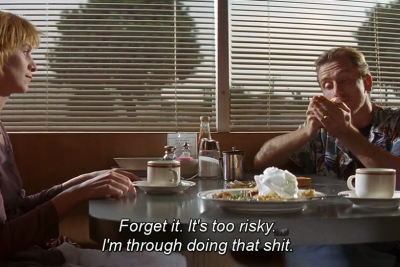India entered the last decade of the 20th century precariously, with grave uncertainties on every possible dimension. The economy was in a complete disarray (BOP crisis); Political Upheaval (4 different Prime Ministers within 3 years); Religious Fault lines exploding (Babri Masjid); Social discord (Mandal Commission’s report implementation); Kashmir insurgency at its peak and global oil prices peaking due to the Gulf War. The situation was rife for India to become a failed state, as the doomsayers have been predicting ever since India, the biggest experiment in nation building, came into existence in 1947.

“The Rise of the Unlikely Heroes: P.V. Narasimha Rao & Manmohan Singh”. Yet again India disappointed the Western Sociologists & Economists and somehow managed to wade through the turbulent 90’s. But not without fundamentally changing the nature of its economy. The New Industrial Policy 1991 was launched, popularly known as Rao-Manmohan model. The chief target areas were dismantling the license raj, de-reservation & deregulation of hitherto reserved sectors, and moving towards free float of exchange rate & relaxation of controls on convertibility.

“The Rise of the Aspirational Indian”. With only a few strategic sectors (defense, nuclear energy etc.) reserved for the government coupled and easing of capital controls, India found the much needed entrepreneurial zeal. Exports & Imports became 36% of India’s GDP as compared to an average of 11% in pre-liberalization era. Foreign Investments (direct & portfolio combined) increased more than 700 times in 2015-16 as compared to 1990-91. GDP grew at an average rate of more than 7% as compared to the Hindu growth rate of 3-4% pre 1991. The most critical aspect of the reforms apart from the numbers was the willingness of Indians to take entrepreneurial risks. 1990’s & more so since 2000’s India is witnessing a host of first generation entrepreneurs (Ritesh Agarwal, Naveen Tewari & Nandan Nilekani among others) to make it big.

“Unfinished Tasks: The Second Generation Reforms”. After the initial euphoria & success, India seemed to have missed the bus for next stage of reforms. India’s transformation to a modern economy has still not occurred and as Ruchir Sharma pointed out in his celebrated book “Breakout Nations”, India has only a 50-50 chance of being a breakout nation. This is mainly because the Indian growth story has eschewed manufacturing sector, thereby leading to a phenomenon called ‘jobless growth’. The infrastructure is critically starved: the average turnaround time for a ship at an Indian port is around 4-days as compared to 6 hours on Singapore port. 55% of India’s agriculture is still rain-fed and 24X7 power supply pan-India is still a pipe-dream. The above factors coupled with governance deficit, has led both the manufacturing & agricultural sector to under-perform as growing inequities in the society has fueled social unrest. Raghuram Rajan has pointed out that Indian needs critical second generation reforms to pull itself out of the current quagmire, the political will for which was clearly lacking in the face of rising populist policies.

“The Road Ahead”. One thing that has been cemented in the past 25 years is an overwhelming acceptance of the fact that neo-liberal reforms are the way forward for the Indian economy. The timing & the manner of those are what is left to debate. With the ushering of a new government at the center, the much needed sense of urgency for big-ticket reforms is back on the agenda. Labor reforms have been set in motion with FDI limits being raised for aviation, food, defense & pharma among others. The GST Bill which has been in the folds for more than a decade across different governments is about to see the light of the day. But yet much is left to be desired as the current reforms are a patch work at best. Full capital account convertibility is not even being debated let alone being on the horizon.
The crux about growth is that growth cannot be distributed post generation, the assets for creating it in the first place have to be inclusively made available across the society. The neo-liberal reforms are designed to fulfill this need.
To sum it up “To fulfill its Tryst with Destiny, India has miles to go & promises to keep”.


















Comments